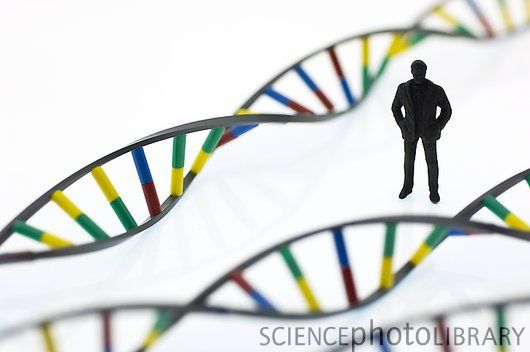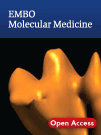导读:犹他州大学Huntsman癌症研究所(HCI)的研究人员开发出一种新方法以识别出诱发癌症的遗传物质重排事件(称为染色体易位)。肿瘤细胞中染色体易位引起癌变,已发现数百个致癌的遗传物质易位事件,但目前的检测方法存有严重缺陷。

新方法可识别出癌症发生的遗传物质重排事件
犹他州大学Huntsman癌症研究所(HCI)的研究人员开发出一种新方法以识别出诱发癌症的遗传物质重排事件(称为染色体易位),该方法具有快速、准确和费用低的特点,相关的方法和研究结果发表在本月《欧洲分子生物学分子医学》EMBO Molecular Medicine 在线期刊上。
肿瘤细胞中染色体易位引起癌变,已发现数百个致癌的遗传物质易位事件,但目前的检测方法存有严重缺陷。
Stephen Lessnick医学博士是HCI研究中心的主任,他研发出的新方法把微阵列技术和新型抗体结合在一起,前者能够一次性检测出数千个易位事件,而后者具有对易位的检测功能。 Lessnick称:“我们将推动医学检测时代的前进,在之前的技术中,病理学家通过在显微镜下观察肿瘤样本诊断癌症的类型。目前在用的分子检测方法速度慢,效率低以及价格昂贵,此外,最大的问题之一是需要高质量的肿瘤样本,在临床上不可能做到这一点。新方法能够接受标本的现实性,这一点要优越于现行的规范技术。”
Lessnick称:“该方法原本用于研究酵母的RNA,之后,我们才把它应用于研究人体组织中的染色体易位,接下来的任务是要找到一个商业合作伙伴,共同把这项研究开发出一种诊断方法以帮助医生检测病人。”
他还说: “借助这项技术,研究人员将来有望开发出单一阵列以同时测试已知的所有致癌易位,而目前医生只能检测特定的预测癌症。”
研究人员开发出针对尤因氏肉瘤(一种罕见的儿童肿瘤)病例的诊断技术,而Lessnick认为,这项技术可以很容易地适用于易位引起的任何类型的肿瘤。
研究资金来自于美国国立研究所卫生创新分子分析技术项目,该项目致力于把基础研究的新想法推向于临床应用,如凯恩斯实验室。Lessnick称:“他们愿意在缺少大量初步数据的情况下资助这一想法,因为它具有临床应用的广阔前景。”
Lessnick实验室获得霍华德•休斯医学研究所的资金支持,其它的研究资助来自于Sidney's Incredible Defeat of Ewing's Sarcoma (SIDES)。

 Antibody detection of translocations in Ewing sarcoma
Antibody detection of translocations in Ewing sarcoma
Wen Luo, Brett Milash, Brian Dalley, Richard Smith, Holly Zhou, Natalie Dutrow, Bradley R. Cairns, Stephen L. Lessnick
The detection of chromosomal translocations has important implications in the diagnosis, prognosis and treatment of patients with cancer. Current approaches to translocation detection have significant shortcomings, including limited sensitivity and/or specificity, and difficulty in application to formalin-fixed paraffin-embedded (FFPE) clinical samples. We developed a new approach called antibody detection of translocations (ADOT) that avoids the shortcomings of current techniques. ADOT combines a transcriptional microarray-based approach with a novel antibody-based detection method. ADOT allows for the accurate and sensitive identification of translocations and provides exon-level information about the fusion transcript. ADOT can detect translocations in poor-quality unprocessed total ribonucleic acid (RNA). Furthermore, the technique is readily generalizable to detect any potential fusion transcript, including previously undescribed fusions. We demonstrate the feasibility of ADOT by examples in which both known and unknown Ewing sarcoma translocations are identified from cell lines, tumour xenografts and FFPE primary tumours. These results demonstrate that ADOT may be an effective approach for translocation analysis in clinical specimens with significant RNA degradation and may offer a novel diagnostic tool for translocation-based cancers.
文献链接:https://onlinelibrary.wiley.com/doi/10.1002/emmm.201200225/abstract







